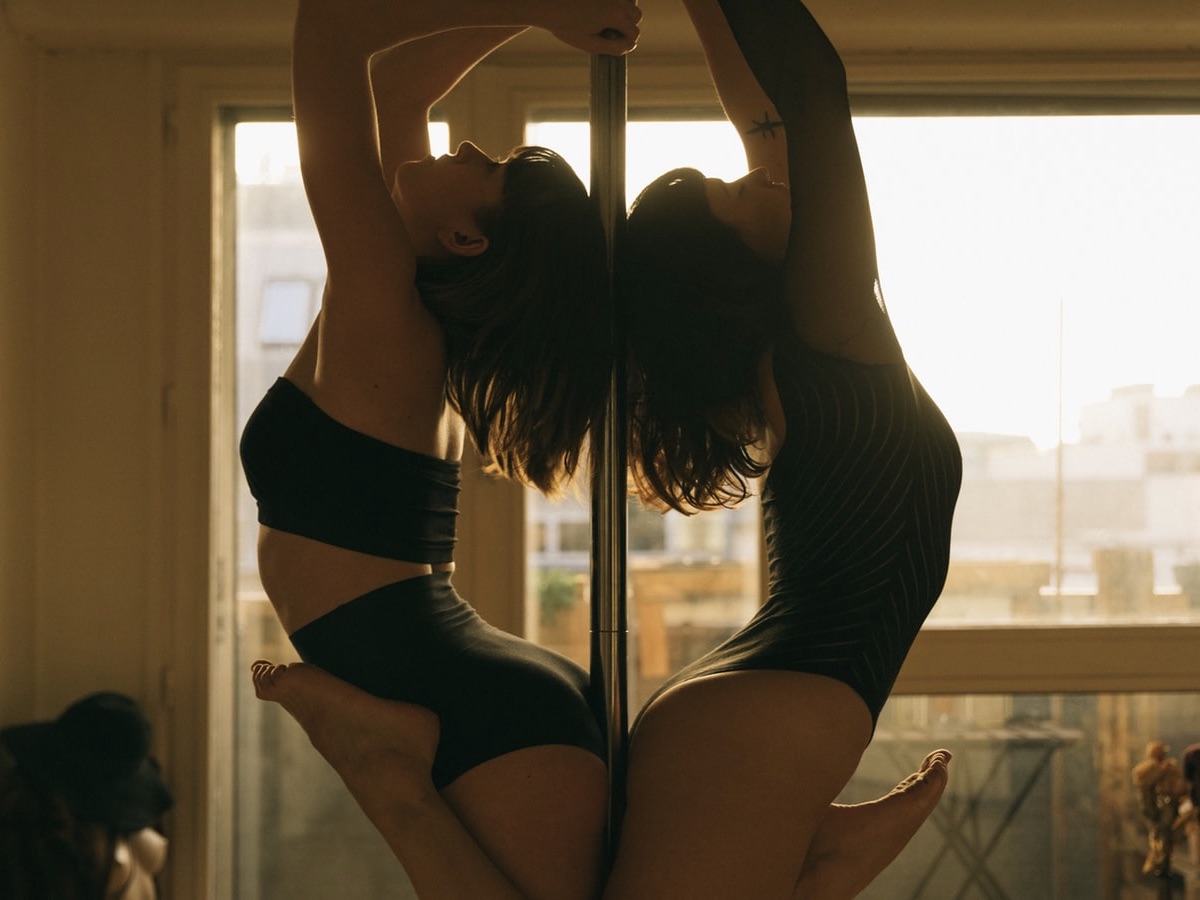Inner left, outer left, hug the pole, point the toes, pivot, spin, hook and baseball bat arms. These are just a few terms I heard when I attended my first pole dancing class. Most people might think it’s easy. A person gets up on a pole and swings in a circle. But that could not be any further from the truth. Any form of dance is an art, and that doesn’t exclude pole dancing.
Thank the film “Hustlers” for bringing light back toward pole dancing. The 2019 film, which starred Jennifer Lopez, followed a storyline based on true events. In short, a top earner at a strip club befriended a newbie dancer and gets her to steal money from men on Wall Street who go to their club.
Lopez didn’t come naturally to the pole, and along with other cast members, she needed months of preparation and strength training to pole dance. In an interview with Insider, she said learning to pole dance was one of the hardest things she had to do for a role.
The Origins of Pole Dancing
Pole dancing has actually been around since about the 12th century — 1200 B.C., to be specific. Pole dancing essentially originated in India with a sport called Mallakhamb, which is when men perform acrobatics around a large wooden pole. The sport then spread to China, and then it spread all over when traveling circuses became an entertainment event. Shortly after that, burlesque clubs became a hit, and pole dancing was introduced into clubs and bars.
Yet, that is where the misconception about the dance style comes into the picture. Pole dancing is often associated with night clubs and adult entertainment. Since the mid-2000s, pole dancing has existed for more than just acquiring dollar bills; more often than not, people pole dance for fitness.
Pole dancing for fitness and skill has become more and more popular recently. It’s a fun way to get fit. Often, major cities have dance studios specifically for pole dancing. These studios contain classes for beginners, intermediates and those who are advanced. There are also classes that use the pole as a prop, such as floor dance, and there are heels classes and aerial pole classes offered at studios as well.
What Is Pole Dancing?
So why pole dancing? Why not just regular dancing?
Pole dancing is a full-body workout. It’s strength training and cardio in one, and it improves flexibility. Pole dancers perform acrobatic tricks using only the pole and their body, and this takes a huge amount of strength as well as trust and comfort toward the pole. Even simply learning how to climb a pole is a difficult task, yet some people do pole dancing as a sport.
The Pole Sport Organization (PSO) holds pole dancing competitions, and they believe that anyone of any level and age should have the chance to be onstage to showcase their pole skills. Over 3,000 dancers compete each year in the largest pole dancing competition series, where they strive to be crowned the U.S. National Pole Champion. The whole point of the competition is to test the skills learned in the studio. Competitors often compete for titles, sponsorships and cash prizes.
Besides PSO, there’s also the U.S. Pole Sports Federation, which oversees pole sports. The federation is an active member in the USA Sports Council and wants to bring recognition to pole as a sport. They even want to include it in the Olympic Games. The federation claims that pole sports require great physical and mental exertion, strength and endurance as lifting, holding and spinning the body is required.
While the federation isn’t wrong in what is required of pole dancing, there’s still an image problem surrounding the style of dance. It may be hard to see the acrobatic and gymnastic skills hidden in the movements and way a pole dancer dresses.
Pole dancers often wear little to no clothes in order to stick to the pole — the more skin contact, the better chance of stability. But to combat the stigma, studios and competitions are regulating what a dancer can wear, and a stage name is optional due to professional concerns.
Why You Should Try It
What’s wonderful about the dance is that it’s not just for women anymore. Like its origins, men can also participate in the art, and a majority of men are just as skilled as women due to their strength advantage.
Besides needing strength, there’s a lot of stretching before and after any work is done on the pole. Stretching can prevent injuries and increase flexibility to make moves more comfortable. Emphasis is placed on the hamstrings, hips and shoulders, as those are the dominant muscles that hold your body up. Then, after the stretches, there are the moves done on the pole. Whether it be in the air or on the floor, what happens after that is based on the class chosen.
Dancing is physically demanding and can result in scar tissue because each time you train, the body tones and strengthens the core muscles. This is why it takes months of strength training and practice to learn how to pole dance.
Exercise in general is recommended for chronic pain or weight loss, but even pole dancing can be beneficial because it engages all the body’s muscles. The only real risk associated with pole dancing is bruising and skin burns; however, with the right practice, confidence and flexibility, learning how to pole dance may outweigh the risk when following the correct structure and guidance.
Pole dancing isn’t as daunting as it seems — you do not have to do it as only a sport. It can be a hobby or even just an activity to try with a group of friends, whether you’re trying to get fit, have fun or be sexy. Though, I’m sure no one would deny wanting to look like Jennifer Lopez.

















